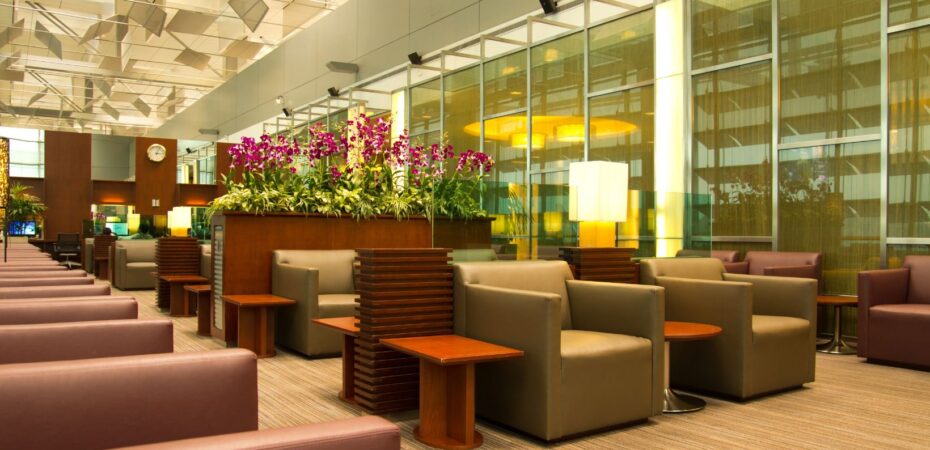Hospitality design is no longer defined by permanence. Spaces that once stayed still now move with the rhythm of their guests. Booth design, once fixed to the floor and bound to a single function, has become an emblem of modern adaptability.
Everywhere from bustling airport terminals to quiet neighborhood cafés, quality restaurant booths offer a balance between privacy, comfort, and practicality. It adapts to the needs of travelers who crave calm, freelancers who seek focus, and locals who gather for connection. The booth has become a universal language of belonging, one that translates effortlessly across cultures and environments.
In today’s fast-paced world, people look for places that feel both familiar and flexible. They may spend a morning answering emails in an airport lounge and an evening meeting friends in a café, yet the essence of comfort remains the same. Booths provide that bridge. They carry a recognizable form of hospitality that travels well, offering continuity in a constantly changing landscape.
Design Adaptability: From Transit Hubs to Corner Cafés
The real power of booth design lies in its versatility. Each space has unique demands, but the principles of good booth design remain consistent: ergonomic comfort, efficient layout, and aesthetic balance.
In airport lounges, booths must offer more than a seat; they provide micro-environments for relaxation or productivity. In cafés, they double as focal points that define the rhythm of the interior. Designers blend materials, geometry, and acoustics to tailor the same structure for entirely different purposes.
- Modular Construction: Many booths are built in detachable sections that can be rearranged or expanded without disrupting service. This design flexibility ensures that operators can adjust their layout for different events or customer flows.
- Cohesive Aesthetics: Booths now follow a consistent design philosophy, blending into various settings while maintaining brand identity. Fabric color, stitching, and finish can vary, but the form remains recognizable and dependable.
The adaptability of booth seating mirrors the shifting nature of hospitality itself. As design becomes more nomadic, so does the furniture that defines it.
Mobility as a Business Strategy
Mobility is not just a visual or structural feature. It is a business model. Restaurant and café owners now invest in booth systems that grow with them, allowing for quick reconfiguration, relocation, and maintenance.
In large transit hubs such as airports, modular booths can be rotated or re-angled to manage passenger flow. This practical mobility helps increase seat turnover during peak hours and create quieter zones during slow periods.
In smaller cafés, the story is more personal. A movable booth layout allows owners to reinvent the atmosphere with minimal cost, turning a narrow corridor into a private corner or expanding group seating during weekends. The flexibility brings measurable returns, reducing the need for costly renovations and extending the furniture’s lifespan.
Booths that can be moved, repurposed, or updated represent a long-term investment that adapts to business evolution, not just design trends.
Comfort, Privacy, and Purpose
At its core, booth design is emotional design. Beyond the material or structure, booths shape how people feel. They create safe pockets within open environments and encourage longer stays through comfort and psychological ease.
Ergonomic Support: High-back booths and soft cushioning provide posture support and sound insulation. Guests can relax, converse, or work without distraction, which in turn enhances satisfaction and loyalty.
Spatial Psychology: The placement and height of booths influence how people connect. Slightly enclosed spaces encourage private talks, while lower dividers invite community and openness. Designers use these subtle cues to guide guest behavior naturally.
Booths meet a universal need for balance between solitude and connection. In a crowded airport or a cozy coffee shop, they offer a rare kind of personal space within the public realm.
Materials That Move with the Times
Innovation in materials has revolutionized booth construction. Modern designs rely on lightweight aluminum frames, engineered plywood, and antimicrobial fabrics that are easy to clean and quick to reupholster. This practical evolution allows booths to travel between concepts, climates, and interior styles.
Some manufacturers experiment with recyclable composites and smart textiles that resist stains or regulate temperature. These materials are both sustainable and functional, helping operators maintain a polished look with minimal upkeep.
The combination of advanced technology and craftsmanship keeps booth design relevant. The same booth can serve as a high-end fixture in a luxury terminal one day and as a community centerpiece in a local café the next, simply by changing finishes or colors.
The Future of Flexible Design
Looking ahead, mobility in booth design will merge with technology. Integrated charging points, built-in lighting, and adjustable privacy panels are becoming common. Some designers are even exploring modular smart systems that sense occupancy and adjust ambient features to enhance comfort.
This evolution points toward a more fluid hospitality model, one where furniture anticipates behavior and adapts in real time. Brands expanding across global markets will use standardized booth modules that fit diverse interiors while retaining cultural identity.
The lesson is simple: flexibility is the new permanence. From airport lounges to local cafés, the booth has transcended its static origins. It now moves with people, aligns with lifestyle, and defines modern comfort. What once stood still now travels, bringing the familiar feel of hospitality wherever the journey leads.


 By
By 




